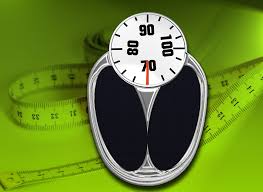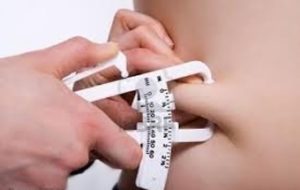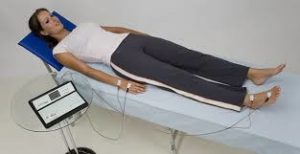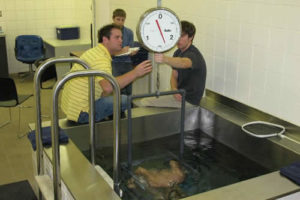You need some fat if you body is to function properly. But too much fat will harm your health. Most diabetics are overweight when they are diagnosed. So you need to monitor your fatness and take corrective action. Here are eight ways you can check your adiposity.
A healthy body requires a minimum amount of fat for the proper functioning of its hormonal, reproductive and immune systems. Fat also acts as an insulator that keeps the body’s temperature stable, as a shock absorber for sensitive areas, and as a store of energy for future use.
But carrying too much fat around can damage your health.
Being overweight is having more body fat than is optimal for your health. Obesity is a medical condition in which you have so much body fat that it has an adverse effect on your health.
But how do you measure your adiposity, ie how fat you are?
There are several ways the amount of fat can be measured. Some are more accurate than others:
- Simple weighting
- Pinch test
- Body mass index
- BMI prime
- Body volume index
- Bioelectrical impedance analysis
- Hydrostatic weighting
- DEXA (dual-energy x-ray absorptiometry)
[1] Simple weighting
Your weight is measured, using a bathroom scales (say), and compared to an estimated ideal weight.
 But this method only measures one variable and does not take many factors such as height, body type and relative muscle mass into account.
But this method only measures one variable and does not take many factors such as height, body type and relative muscle mass into account.
However it is the easiest and thus the most common method used. It is also useful in showing the trend in your weight over time (provided you keep records).
But note how it should be done:
Same time … you should weigh yourself at the same time each day, as eating and drinking will cause your weigh to go up and down a bit during the day. We are usually at our heaviest in the evening, so weigh yourself when you get up in the morning after you have been to the toilet.
Same scales … you should use the same weighting scales each time you weigh yourself, as most scales vary a bit.
Calibrate … always calibrate the scale to zero before you weigh yourself, to ensure that you get comparable readings each time. Most domestic bathroom scales have a little wheel on the side for doing this and they are simple to use.
[2] Pinch test
Your skin is pinched at several specific points of your body and the thickness of the skin-fold is measured using a calipers. This measures the thickness of the fat under the skin, which is used to calculate the total amount of fat in your body.
 The measurement and analysis involves a high degree of practice and interpretation. This means it is difficult to do accurately on your own at home.
The measurement and analysis involves a high degree of practice and interpretation. This means it is difficult to do accurately on your own at home.
The pinch test also has other limitations. The calipers only measure the fat under the skin at a few specific locations, ie, subcutaneous fat, while the distribution of fat throughout the body varies significantly from person to person. And the method cannot measure fat deposits that are not directly under the skin.
[3] Body mass index
Your body mass index (BMI) is a measure of your weight taking your height into account.
The simple formula is … your body weight (in kilograms) divided by the square of your height (in metres).
For example, if you weigh 80kg and are 1.8m tall, your BMI would be 80/(1.8×1.8) = 24.7.
Your BMI does not actually measure the percentage of body fat you have. It is only a simple number that shows you how fat or thin you are. It is a bit rough-and-ready … it fails to take factors such as the size of your frame and how muscular you are into account.
Nevertheless, the BMI is used by most medical professionals to determine whether your weight is too low, normal, or too high.
The generally accepted guidelines for non-Asians are as follows:
- Underweight … <18.5
- Normal … 18.5 – 25
- Overweight … 25 – 30
- Obese … >30
These ranges only apply to ethnic Europeans, Africans, Arabs and South Asians (ie, Pakistanis and Indians).
Ethnic populations in the Far East develop health problems at lower BMIs than Caucasians and Africans due to their smaller skeletal size and lesser muscularity. The recommended cut-off points for Asians are:
- Underweight … <18.5
- Normal … 18.5 – 23
- Overweight … 23 – 27.5
- Obese … >27.5
But some Far Eastern countries use different cut-off points. For the Japanese, obesity begins at 25.
 Recent reports suggest that people who are mildly overweight to slightly obese … BMI between 24 and 31.9 … may be living longer than persons whose weight is normal or who are underweight. But research on this matter still has to be confirmed by further analysis.
Recent reports suggest that people who are mildly overweight to slightly obese … BMI between 24 and 31.9 … may be living longer than persons whose weight is normal or who are underweight. But research on this matter still has to be confirmed by further analysis.
A drawback of BMI is that it does not take account of muscle mass, some rare genetic factors, the very young and several other variations.
It is possible for a person with a BMI of less than 25 to have excessive body fat, while others with a significantly higher BMI (such as fit athletes who have more muscle than the rest of us) do not have excess body fat.
[4] BMI Prime
BMI Prime is the ratio of your actual BMI number to the upper limit of ‘normal’ BMI, which is 25 if you are an ethnic Caucasian, Negro or Semite. It is a handy way to find out how much you are over or under ‘normal’ weight.
For example, if your BMI is 28, you can divide 28 by 25 to get 1.12 … this means you are overweight by 12%. If your BMI is 35, you divide 35 by 25 to get 1.40 … which means you are 40% overweight.
If your BMI Prime is between 0.74 (18.5/25) and 1.00 (25/25), your weight is normal. However, if it is less than 0.74 (eg, 16/25 = 0.64) you are under weight and need to start eating more.
If you are Asian, instead of dividing by 25 you divide by 23 (the upper limit of ‘normal’ for people with a Far Eastern physique).
[5] Body volume index
The BMI relates your total weight to your height … but it does not take into account where fat is located on your body. Recent studies have shown that location is important in assessing the risk fat poses to your health.
For example, medical scientists now consider that visceral fat, ie excess fat around the middle and abdominal organs such as the liver, also known as central obesity, is a greater risk to your health than fat elsewhere on your body.
The body volume index (BVI) is a computerised way of measuring your body for obesity and the threat it poses to your health. Unlike the BMI, it takes the shape of your body into account.
Devised in 2000, BVI uses 3D software to perform a full scan of the surface of your body. Most body scanners take a number of images from different angles, using variable lighting, as well as patterns projected onto your body, to create a three-dimensional outline of your exterior surface.
This complex 3D image allows the volume and composition of individual body parts (arms, legs, chest and so on) to be calculated. Each part has its own 3D shape, weight and size. The program now knows where weight is distributed across your body, eg chest, abdomen, pelvis and thighs.
The data on your weight, height and shape is combined by the program with your age, gender and medical history. The results are then compared to the average BVI for people of the same gender and age to show BVI.
As well as your BVI, the program also calculates you BMI, waist to hip ratio, waist circumference, and other relevant data relating to your weight and shape.
Used over time, it provides a precise guide to where you are gaining or losing your weight and the related implications for your health. This enables you to make informed decisions on your eating and exercise patterns.
The BVI has two drawbacks … it is expensive … and, it is an excellent example of clinical overkill.
The full 3D body scanner is usually a booth (a bit like the walk-thru security booths you use at an airport) with an array of sensors and cameras. While it produces a 3D image in seconds, it is expensive to buy and operate.
But do you really need the detailed, highly accurate and complex analysis that the body volume scanner supplies?
Surely you can weight yourself in the bathroom and have a quick look in the mirror you see if you belly is too fat and saggy?
A tailor’s tape measure made of cloth can be used to measure the circumferences of your various body parts if you think that would be useful.
[6] Bioelectrical impedance analysis
In bioelectrical impedance analysis (BIA), between 2 and 8 electrodes are attached to various parts of your body. The higher the number of electrodes, the more accurate is the measurement.
A mild electric current is then passed through the electrodes. The equipment measure the electrical impedance (opposition to the flow of an electric current) through your body tissues.
 Fat, muscle and water conduct electricity differently and so this method can provide a direct measurement of the percentage of body fat you are carrying.
Fat, muscle and water conduct electricity differently and so this method can provide a direct measurement of the percentage of body fat you are carrying.
The impedances are used to estimate total body water, which is used to estimate your fat-free body mass (muscle and bone). Subtracting fat-free body mass from your weight gives your body-fat weight.
BIA is easy to use. The equipment is portable and costs a lot less than some of the other methods of analysing the composition of your body.
Home testing kits are also available. But these are viewed as being less accurate than the machines used in clinics as they tend to underestimate the percentage of body-fat.
When using BIA care needs to be taken as a number of factors can affect the results:
- Dehydration causes the body’s electrical resistance to increase, causing an underestimation of fat-free mass, ie an overestimation of body fat.
- Eating a meal shortly before using BIA can cause body-fat to be underestimated.
- Moderate exercise before BIA measurements are taken reduces impedance, so fat-free mass is overestimated and body fat percentage is underestimated.
BIA is considered reasonably accurate for tracking your body composition over time but is not considered precise enough for one-off measurements.
Nevertheless its ease of use, the portability of the equipment and its low-cost compared to other ways of analysing body composition makes it popular.
[7] Hydrostatic weighting
Hydrostatic weighing is a method of determining the body composition (body fat to lean mass) that makes up a person’s total body density.
The technique use s Archimedes’ Principle of Displacement which states that the buoyant force on a submerged object is equal to the weight of the fluid that is displaced by the object.
s Archimedes’ Principle of Displacement which states that the buoyant force on a submerged object is equal to the weight of the fluid that is displaced by the object.
The densities of fat mass and fat-free mass are constant. That is, for example, one cubic metre of your fat always weights the same, as does one cubic metre of your fat-free mass.
But lean tissue, such as muscle and bone, is denser than water, while fat tissue is less dense than water, ie muscle sinks and fat floats.
Thus, someone with more body fat will be more buoyant and weigh less underwater … someone with more muscle will weigh more.
In hydrostatic weighting, you are first weighed on land. Next, while sitting on a special scale, you are lowered into a large tank of water until you are submerged completely.
You have to expel all the air from your lungs as you go under and then remain motionless while your weight underwater is measured.
The procedure is repeated three times and then the average weight under water is accepted. This is then compared with your weight on land.
Fat weighs less than muscle. Fat and muscle each have a constant mass and kilogram for kilogram displace a specific volume of water. Thus the difference between your weight on land and your weight under water can be used to calculate the weight of your lean tissue and of your fat and the percentage of body fat.
This technique is considered one of the most accurate ways of measuring body fat provided it is administered by trained professionals. However it does require expensive equipment.
[8] DEXA (dual-energy x-ray absorptiometry)
A DEXA or dual-energy x-ray absorptiometry scan measures your bone density, muscle mass, fat mass and your height. In fact it provides separate measurements of the weight of your head, your torso, and each of your legs and arms.
 You lie down on the scanner bench with your feet together and your arms by your side. You have to remain still for up to 15 minutes while the machine slowly moves from your head to your toe, centimetre by centimetre, clicking as the little rays go back and forth across every inch of your body.
You lie down on the scanner bench with your feet together and your arms by your side. You have to remain still for up to 15 minutes while the machine slowly moves from your head to your toe, centimetre by centimetre, clicking as the little rays go back and forth across every inch of your body.
You don’t feel the scan at all and you don’t need to wear protective clothing as radiation levels are low making it very safe.
DEXA uses two different low energy x-rays to simultaneously determine global and local fat content, bone mineral content (and therefore bone density), and muscle mass with excellent precision.
DEXA scans generally give you a percentage of 3-5% higher than other measures of body fat, as it measures all of your fat, not just the fat under your skin.
The desirable body fat for fit males should be 14 to 17 percent of total weight. Fit male athletes will have about 4-6 percent less body fat (as a percent of total body weight). Fit females should have a body fat value of 21-24 percent (of total body weight).
Males with values in excess of 26 percent and females in excess of 32 percent fat are generally considered overweight or obese.
The DEXA test is considered very accurate but it requires a lot of very expensive equipment as well as trained professionals to carry it out.
Diabetes caused by being overweight
BMI is the method preferred by medical doctors and researcher for deciding whether a person is too fat and by how much.
If you are overweight, your body has more fat cells than your physique (shape and size) warrants.
According to researchers, excess body fat underlies 64% of cases of diabetes in men and 77% of cases in women.
Thus, if you are overweight and are serious about beating your diabetes you have to get your weight down. Here are some statistics to get you motivated:
- Large-scale studies of Americans and Europeans have found that the risk of dying is lowest among non-smokers whose BMIs range from 20 to 25 (ie, who are not overweight).
- A 16-year study of women has shown that those with BMIs of more than 32 died at twice the rate of women with BMIs of less than 32.
- In the USA, obesity (BMI >30) causes more than 365,000 deaths a year, while in the EU, excess weight (BMI >25) is a contributory factor in one million (7.7%) of all deaths each year.
- If you are obese, your life expectancy is reduced by an average of six to seven years … a BMI of 30 to 35 reduces life expectancy by two to four years, while extremely severe obesity (BMI > 40) reduces it by 10 years.
With these kinds of figures, you just got to get serious about reducing your weight.
